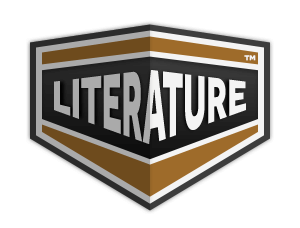Irish Nationality
- 53 Downloads
Roman proprietors throughout the Empire. In the same way the foreign learning brought into Ireland was taught through the tribal system of schools. Lay schools formed by the Druids in old time went on as before, where students of law and history and poetry grouped their huts round the dwelling of a famous teacher, and the poor among them begged their bread in the neighbourhood. The monasteries in like manner gathered their scholars within the "rath" or earthen entrenchment, and taught them Latin, canon law, and divinity. Monastic and lay schools went on side by side, as heirs together of the national tradition and language. The most venerable saints, the highest ecclesiastics, were revered also as guardians of Irish history and law, who wrote in Irish the national tales as competent scribes and not mere copyists--men who knew all the traditions, used various sources, and shaped their story with the independence of learning. No parallel can be found in any other country to the writing down of national epics in their pagan form many centuries after the country had become Christian. In the same way European culture was not allowed to suppress the national language; clerics as well as laymen preserved the native tongue in worship and in hymns, as at Clonmacnois where the praises of St. Columcille were sung, "some in Latin, which was beguiling, some in Irish, fair the tale"; and in its famous cemetery, where kings and scholars and pilgrims of all Ireland came to lie, there is but one Latin inscription among over two hundred inscribed grave slabs that have been saved from the many lost. Like the learning and the art, the new worship was adapted to tribal custom. Round the little monastic church gathered a group of huts with a common refectory, the whole protected by a great rampart of earth. The plan was familiar to all the Irish; every chief's house had such a fence, and every bardic school had its circle of thatched cells where the scholars spent years in study and meditation. Monastic "families" which branched off from the first house were grouped under the name of the original founder, in free federal union like that of the clans. As no land could be wholly alienated from the tribe, territory given to the monastery was not exempted from the common law; it was ruled by abbots elected, like kings and judges of the tribe, out of the house which under tribal law had the right of succession; and the monks in some cases had to pay the tribal dues for the land and send out fighting men for the hosting. Never was a church so truly national. The words used by the common people were steeped in its imagery. In their dedications the Irish took no names of foreign saints, but of their own holy men. St. Bridgit became the "Mary of the Gael." There was scarcely a boundary felt between the divine country and the earthly, so entirely was the spiritual life commingled with the national. A legend told that St.
Translation
Translate and read this book in other languages:
Select another language:
- - Select -
- 简体中文 (Chinese - Simplified)
- 繁體中文 (Chinese - Traditional)
- Español (Spanish)
- Esperanto (Esperanto)
- 日本語 (Japanese)
- Português (Portuguese)
- Deutsch (German)
- العربية (Arabic)
- Français (French)
- Русский (Russian)
- ಕನ್ನಡ (Kannada)
- 한국어 (Korean)
- עברית (Hebrew)
- Gaeilge (Irish)
- Українська (Ukrainian)
- اردو (Urdu)
- Magyar (Hungarian)
- मानक हिन्दी (Hindi)
- Indonesia (Indonesian)
- Italiano (Italian)
- தமிழ் (Tamil)
- Türkçe (Turkish)
- తెలుగు (Telugu)
- ภาษาไทย (Thai)
- Tiếng Việt (Vietnamese)
- Čeština (Czech)
- Polski (Polish)
- Bahasa Indonesia (Indonesian)
- Românește (Romanian)
- Nederlands (Dutch)
- Ελληνικά (Greek)
- Latinum (Latin)
- Svenska (Swedish)
- Dansk (Danish)
- Suomi (Finnish)
- فارسی (Persian)
- ייִדיש (Yiddish)
- հայերեն (Armenian)
- Norsk (Norwegian)
- English (English)
Citation
Use the citation below to add this book to your bibliography:
Style:MLAChicagoAPA
"Irish Nationality Books." Literature.com. STANDS4 LLC, 2024. Web. 27 Nov. 2024. <https://www.literature.com/book/irish_nationality_34900>.

